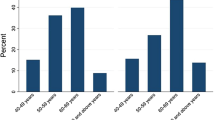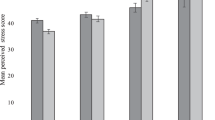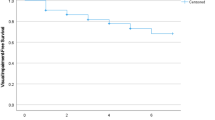Abstract
Objective
To determine the relationship between visual impairment and other disabilities in a developing country.
Methods
In this cross-sectional ancillary study, all individuals 50 years and older in 18 communities in the Chitwan region of Nepal were administered visual acuity screening and the Washington Group Short Set (WGSS) of questions on disability. The WGSS elicits a 4-level response for six disability domains: vision, hearing, walking/climbing, memory/concentration, washing/dressing, and communication. The association between visual impairment and disability was assessed with age- and sex-adjusted logistic regression models.
Results
Overall, 4719 of 4726 individuals successfully completed visual acuity and disability screening. Median age of participants was 61 years (interquartile range: 55–69 years), and 2449 (51.9%) were female. Participants with vision worse than 6/60 in the better-seeing eye were significantly more likely to be classified as having a disability in vision (OR 18.4, 95% CI 9.9–33.5), walking (OR 5.3, 95% CI 2.9–9.1), washing (OR 9.4, 95% CI 4.0–21.1), and communication (OR 5.0, 95% CI 1.7–13.0), but not in hearing (OR 0.6, 95% CI 0.006–2.2) or memory (OR 2.2, 95% CI 0.7–5.1).
Conclusions
Visually impaired participants were more likely to self-report disabilities, though causality could not be ascertained. Public health programs designed to reduce visual impairment could use the WGSS to determine unintended benefits of their interventions.
Similar content being viewed by others
Log in or create a free account to read this content
Gain free access to this article, as well as selected content from this journal and more on nature.com
or
Data availability
The data that support the findings of this study are available on request from the corresponding author, JMN.
References
World Health Organization. World report on vision. Geneva, Switzerland: World Health Organization; 2019. https://www.who.int/publications-detail/world-report-on-vision.
Global Burden of Disease Collaborators. Global, regional, and national incidence, prevalence, and years lived with disability for 354 diseases and injuries for 195 countries and territories, 1990–2017: a systematic analysis for the Global Burden of Disease Study 2017. Lancet. 2018;392:1789–858.
GBD 2019 Blindness and Vision Impairment Collaborators; Vision Loss Expert Group of the Global Burden of Disease Study. Trends in prevalence of blindness and distance and near vision impairment over 30 years: an analysis for the Global Burden of Disease Study. Lancet Glob Health. 2020;9:130–43.
Frick KD, Joy SM, Wilson DA, Naidoo KS, Holden BA. The global burden of potential productivity loss from uncorrected presbyopia. Ophthalmology. 2015;122:1706–10.
Bourne RRA, Flaxman SR, Braithwaite T, Cicinelli MV, Das A, Jonas JB, et al. Magnitude, temporal trends, and projections of the global prevalence of blindness and distance and near vision impairment: a systematic review and meta-analysis. Lancet Glob Health. 2017;5:e888–e897.
Resnikoff S, Pascolini D, Etya’ale D, Kocur I, Pararajasegaram R, Pokharel GP, et al. Global data on visual impairment in the year 2002. Bull World Health Organ. 2004;82:844–51.
Flaxman SR, Bourne RRA, Resnikoff S, Ackland P, Braithwaite T, Cicinelli MV, et al. Global causes of blindness and distance vision impairment 1990–2020: a systematic review and meta-analysis. Lancet Glob Health. 2017;5:e1221–e1234.
Hashemi H, Yekta A, Jafarzadehpur E, Doostdar A, Ostadimoghaddam H, Khabazkhoob M. The prevalence of visual impairment and blindness in underserved rural areas: a crucial issue for future. Eye. 2017;31:1221–8.
World Health Organization. World report on disability. Valletta, Malta: World Health Organization; 2011. https://www.who.int/disabilities/world_report/2011/report.pdf.
Whitson HE, Malhotra R, Chan A, Matchar DB, Østbye T. Comorbid visual and cognitive impairment: relationship with disability status and self-rated health among older Singaporeans. Asia Pac J Public Health. 2014;26:310–9.
Rubin GS, Roche KB, Prasada-Rao P, Fried LP. Visual impairment and disability in older adults. Optom Vis Sci. 1994;71:750–60.
West SK, Munoz B, Rubin GS, Schein OD, Bandeen-Roche K, Zeger S, et al. Function and visual impairment in a population-based study of older adults. The SEE project. Salisbury Eye Evaluation. Invest Ophthalmol Vis Sci. 1997;38:72–82.
Ehrlich JR, Stagg BC, Andrews C, Kumagai A, Musch DC. Vision impairment and receipt of eye care among older adults in low- and middle-income countries. JAMA Ophthalmol. 2019;137:146–58.
Tiberti M, Costa V. Disability measurement in household surveys: a guidebook for designing household survey questionnaires. Washington, DC: The World Bank; 2020.
Madans JH, Loeb ME, Altman BM. Measuring disability and monitoring the UN convention on the rights of persons with disabilities: the work of the Washington Group on Disability Statistics. BMC Public Health. 2011;11:S4.
Washington Group on Disability Statistics. The measurement of disability recommendations for the 2010 round of censuses. Washington, DC: Washington Group on Disability Statistics; 2009. http://www.washingtongroup-disability.com/publications/implementing/.
Mont D. Measuring disability prevalence. World Bank Special Protection. 2007;706:1–41.
Lüdecke D, Makowski D, Waggoner P, Patil I. Performance: assessment of regression models performance. R package version 04. Vienna, Austria: 2020;5.
Thapa R, Bajimaya S, Paudyal G, Khanal S, Tan S, Thapa SS, et al. Prevalence and causes of low vision and blindness in an elderly population in Nepal: the Bhaktapur retina study. BMC Ophthalmol. 2018;18:42.
Team R Core. R: A language and environment for statistical computing. Vienna, Austria: R Foundation for Statistical Computing; 2013.
Pradhan S, Deshmukh A, Giri Shrestha P, Basnet P, Kandel RP, Lewallen S et al. Prevalence of blindness and cataract surgical coverage in Narayani Zone, Nepal: a rapid assessment of avoidable blindness (RAAB) study. Br J Ophthalmol. 2018;102:291–4.
Sapkota Y, Limburg H. Epidemiology of blindness in Nepal 2012. Kathmandu, Nepal: National Research and Monitoring Department of Nepal Netra Jyoti Sangh and Survey Advisory Committee; 2012.
Globe DR, Varma R, Torres M, Wu J, Klein R, Azen SP, et al. Self-reported comorbidities and visual function in a population-based study: the Los Angeles Latino Eye Study. Arch Ophthalmol. 2005;123:815–21.
Hairi NN, Bulgiba A, Cumming RG, Naganathan V, Mudla I. Prevalence and correlates of physical disability and functional limitation among community dwelling older people in rural Malaysia, a middle income country. BMC Public Health. 2010;10:492.
Rudberg MA, Furner SE, Dunn JE, Cassel CK. The relationship of visual and hearing impairments to disability: an analysis using the longitudinal study of aging. J Gerontol. 1993;48:M261–265.
Swanson MW, McGwin G. Visual impairment and functional status from the 1995 National Health Interview Survey on Disability. Ophthalmic Epidemiol. 2004;11:227–39.
Salive ME, Guralnik J, Glynn RJ, Christen W, Wallace RB, Ostfeld AM. Association of visual impairment with mobility and physical function. J Am Geriatr Soc. 1994;42:287–92.
Groce NE, Mont D. Counting disability: emerging consensus on the Washington Group questionnaire. Lancet Glob Health. 2017;5:e649–e650.
Zheng DD, Swenor BK, Christ SL, West SK, Lam BL, Lee DJ. Longitudinal associations between visual impairment and cognitive functioning: the Salisbury Eye Evaluation Study. JAMA Ophthalmol. 2018;136:989–95.
Lim ZW, Chee ML, Soh ZD, Cheung N, Dai W, Sahil T, et al. Association between visual impairment and decline in cognitive function in a multiethnic asian population. JAMA Netw Open. 2020;3:e203560.
Chen SP, Bhattacharya J, Pershing S. Association of vision loss with cognition in older adults. JAMA Ophthalmol. 2017;135:963–70.
Bernabe-Ortiz A, Diez-Canseco F, Vasquez A, Kuper H, Walsham M, Blanchet K. Inclusion of persons with disabilities in systems of social protection: a population-based survey and case-control study in Peru. BMJ Open. 2016;6:e011300.
Bachani AM, Galiwango E, Kadobera D, Bentley JA, Bishai D, Wegener S, et al. A new screening instrument for disability in low-income and middle-income settings: application at the Iganga-Mayuge Demographic Surveillance System (IM-DSS), Uganda. BMJ Open. 2014;4:e005795.
Hajjioui A, Abda N, Guenouni R, Nejjari C, Fourtassi M. Prevalence of disability in Morocco: results from a large-scale national survey. J Rehabil Med. 2019;51:805–12.
Funding
The study was supported by the National Eye Institute and the Fogarty International Center of the National Institutes of Health (NIH) [Award Number D43TW009343] as well as the University of California Global Health Institute (UCGHI) in the form of a Fogarty grant to JMN and grants from That Man May See, the Fortisure Foundation, the Harper-Inglis Memorial for Eye Research, the Peierls Foundation, the Alta California Eye Research Foundation, the Bofinger Glaucoma Research Fund, and Research to Prevent Blindness. The authors held no agreement with the funders that may have limited their ability to complete the research as planned and have full control of all primary data.
Author information
Authors and Affiliations
Contributions
Concept and design: JDK, KSO, JSM, and VMS. Acquisition, analysis, or interpretation of data: All authors. Drafting of the manuscript: JMN and JDK. Critical revision of the manuscript for important intellectual content: All Authors. Administrative, technical, or material support: RPK, RB, BP, HB, SB, KSO, VMS, and JSM. Supervision: JDK.
Corresponding author
Ethics declarations
Conflict of interest
The authors declare no competing interests.
Additional information
Publisher’s note Springer Nature remains neutral with regard to jurisdictional claims in published maps and institutional affiliations.
Supplementary information
41433_2021_1498_MOESM3_ESM.eps
Supplemental Figure 2. Association of visual impairment and pinhole visual acuity. Panel A shows the proportion of people in each visual acuity category, with acuity defined as the best pinhole acuity in the better-seeing eye, and with proportions stratified by age group. Panel B shows the number of people in each visual acuity category. Panel C shows the distribution of raw disability scores within each vision group, stratified by type of disability. Panel D shows the results from age- and sex-adjusted logistic regression models in which the presence of disability (defined as “a lot” or “unable to do” in one or more domains) is modeled as a function of a dichotomous pinhole visual acuity exposure variable (able to read the respective line of vision relative to those unable to read the line); dots represent odds ratios and bars represent 95% confidence intervals, and the dashed line represents an odds ratio of 1.
Rights and permissions
About this article
Cite this article
Nesemann, J.M., Kandel, R.P., Byanju, R. et al. Association of visual impairment with disability: a population-based study. Eye 36, 540–546 (2022). https://doi.org/10.1038/s41433-021-01498-x
Received:
Revised:
Accepted:
Published:
Issue date:
DOI: https://doi.org/10.1038/s41433-021-01498-x
This article is cited by
-
Interaction between visual impairment and subjective cognitive complaints on physical activity impairment in U.S. older adults: NHANES 2005–2008
BMC Geriatrics (2024)
-
Associations of walking impairment with visual impairment, depression, and cognitive function in U.S. older adults: NHANES 2013–2014
BMC Geriatrics (2022)
-
Vision-related quality of life amongst patients with low vision and blindness in a resource-limited country
International Ophthalmology (2022)



